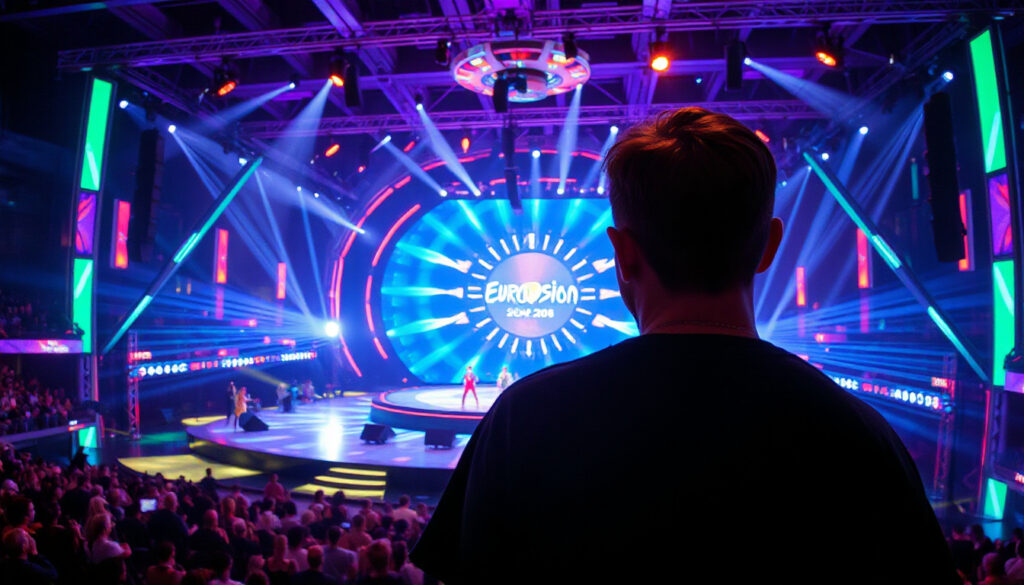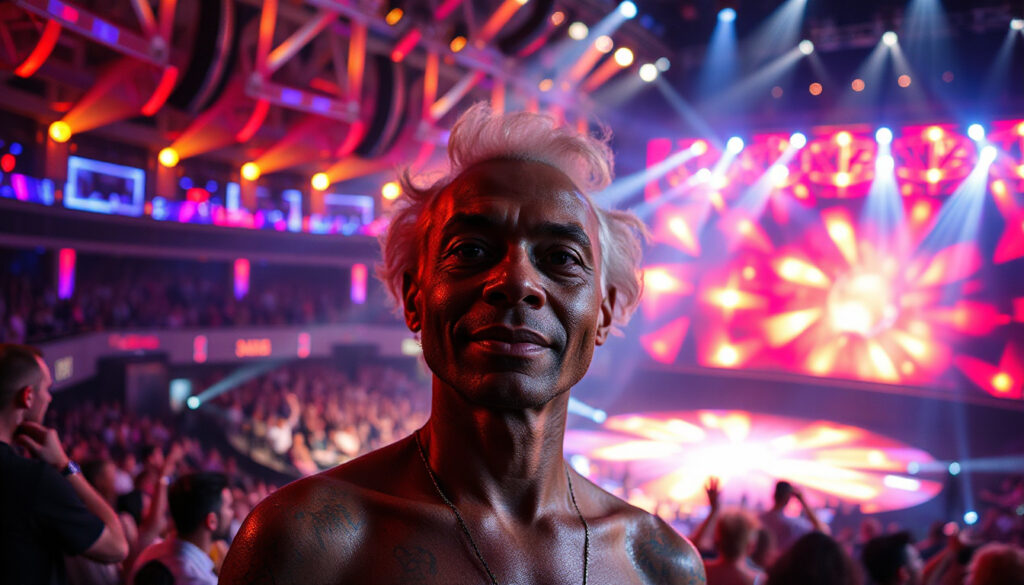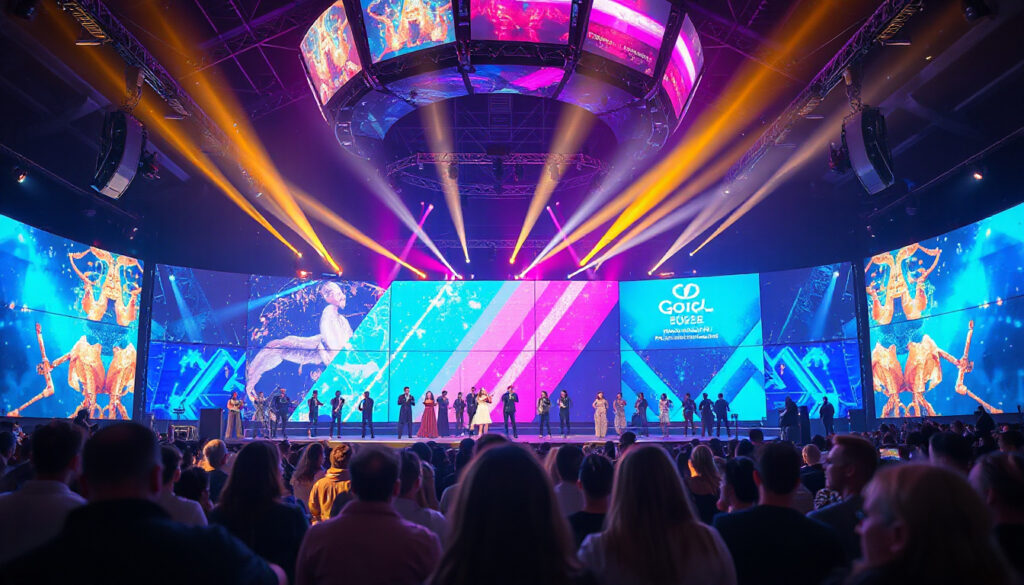The Eurovision Song Contest brings people together with music, culture, and clear visuals. With 2026 set in Austria, many watch closely for the new stage. The stage will show the host’s pride and the global call for unity by song.
If you wonder how a Eurovision 2026 stage can mix art, culture, and tech, read this guide. It lays out new ideas built from past shows and bright future paths.

Why Stage Design Matters for Eurovision 2026
The stage is not a fixed background. It plays an active role in the show. It:
- Tells a story and builds a bond.
- Shows the host country’s heritage and ideals.
- Gives clear visuals for live and online viewers.
- Boosts acts with tech, light, and modern shapes.
This stage touches fans everywhere and makes the contest clear at a glance. For Austria, with its green peaks and rich music history, the design must mix age-old art with a fresh, modern look.
Core Themes and Actionable Insights for Eurovision 2026 Stage Design
1. Reflecting Austria’s Identity Through Visual Storytelling
Austria has a strong link to classical music and alpine views. The base of the stage is like poetry. Designers can:
- Choose shapes that flow, like rolling mountains, rivers, or a music beat.
- Use colors that point to Austria. Pair red and white with lively greens and deep blues to show both nature and a new look.
- Pick clear or layered materials that add depth like a misty valley or a spreading sound wave.
This link ties the design closely to the country’s art.
2. Building a Bond with Moving, Fluid Elements
To show the idea of being united by song, the stage can add parts that move and flow:
- Use LED strips or bands that dance across the stage, much like sound waves.
- Add parts that gently move with each beat, keeping the focus on the act.
- Set lights that follow the music beat, creating moments of shared thrill for the live and online crowd.
These parts join the act, the audience, and the remote viewers.
3. Combining Simplicity with Class
Although Eurovision features bold looks, the 2026 stage can mix grand style with a clear view by:
- Leaving open space on stage so each act stands out without clutter.
- Using clear text in lights or on screens. Pair traditional fonts with clean modern types found in past ESC styles.
- Adding digital effects that support but do not fight with the act. Think of see-through screens, soft gradients, or simple light spots.
This mix keeps Austria’s style pure while keeping the energy high.
4. Using Technology in New Ways
A design that looks to the future uses tech in smart ways; 2026 can push new limits:
- Use smart LED walls with a gentle curve for a wide view.
- Add holograms or extra visual layers that go with the act.
- Pick earth-friendly options like energy-saving lights and reused material.
This mix of tech and earth care can set a fine example for global shows.
5. Designing for Multi-Platform Impact
The stage must impress both in the hall and on screens:
- Make visuals that show well on big displays as well as on small mobile screens.
- Keep symbols and images the same on stage, social media, and fan items to build a strong look.
- Think of the story that the stage tells at every point—from city signs to online posts.
Keeping things clear on all screens makes fans feel part of the show whether nearby or far away.
Examples of Inspirational Past Eurovision Stages
- Vienna 2015: A large lens shape marked the stage with focus and clear sight. Its layers mixed modern charm with nods to Austria’s deep art.
- Düsseldorf 2011: A giant musical note formed the backdrop, stressing the role of sound and motion as playful lights shifted across the space.
- Malmö 2024: With hints from northern lights, the stage used soft green and blue lights to form an almost dreamy scene.
Each design shows that a stage can act as more than a simple space—it can tell a story and stir the heart.
Actionable Takeaways for Eurovision Enthusiasts and Designers
- Use the host country’s art and history as a base for fresh ideas.
- Mix bright, bold colors with calm, deep tones to balance fun with class.
- Add moving parts that mirror the natural flow of music.
- Do not crowd the view—keep room so each act can shine.
- Think of how the design shows up in every place, from arenas to phones.
- Choose earth-friendly methods like smart lights and reused materials in your plan.
What’s Next for the Eurovision 2026 Stage?
Austria’s 2026 stage may mix old art with new tech and ideas. It will form a place where tradition meets future design. Fans and artists look forward to a stage that tells a clear story of music uniting people, boosts every performance, and marks the contest’s 70 years with style.
If you want to see these ideas grow or to shape your own plan, try sketching your dream stage. Think of your favorite moments from past contests and how to give them fresh light. The magic of Eurovision lives in its mix of varied voices. The stage is the place where that magic shows.
Ready to join the talk? Share your thoughts, sketches, or plans for the Eurovision 2026 stage online. Join fan spots and design groups to meet others who mix music, culture, and smart visuals. The work may come from experts, yet the passion of Eurovision fans truly brings it alive.







